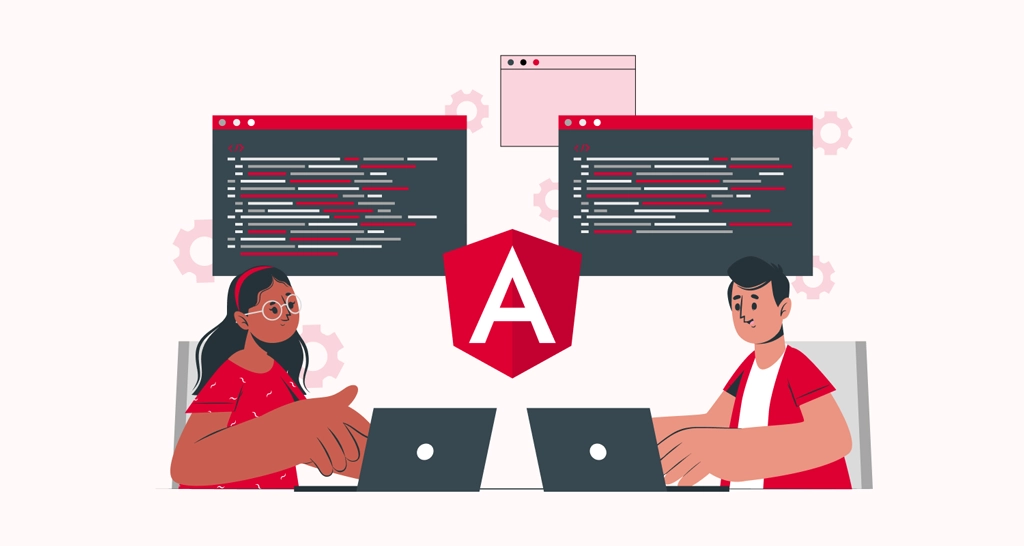Even in today’s dynamic world of web design and development, countless online applications are supported by PHP. And, among the numerous PHP frameworks that aim to make development easier, Laravel is the most popular and important one. This immense popularity is largely due to a feature that helps the framework stand out from all others – a robust routing system. In the following article, we will look at the different features of Laravel routing that have contributed to the reason why it is preferred by countless developers around the world. We will also look at the different types of Laravel routing and its benefits to ensure you have completely grasped the concept.
An Introduction To Laravel Routing
The concept of Laravel routing refers to the mapping of URLs to specific controllers and actions that are a part of the Laravel application. In Laravel’s routing system, the route file includes definitions of the endpoints and URLs that the application is to respond to. A common way to define a Laravel route is as follows:
The above line maps a GET request to the /post/{id} to the show method that is present in the PostController class. The task of the router is to match the URL path and the method to routes to evaluate which controller action is supposed to handle the request.
The Importance of Laravel Routing

Laravel routing is almost like a never-seen-before technology that allows steering HTTP requests towards designated controllers or actions. This helps achieve an optimized coding structure, better resource utilization, and elevates user experience by ensuring URLs are connected to specific functions. Some other reasons why route controller in Laravel and similar concepts are important include:-
1. Definition of Endpoints and URLs
Routes in Laravel help mark where we can go (i.e. endpoints and URLs) and what actions we can perform there (i.e. functionalities and actions). With Laravel routing, proper connections between these are enabled to ensure users get access to the right content when they click on or type something.
2. Better Separation of Logic
With the help of routes, programmers can divide the numerous tasks between controllers. This helps keep the controllers focused on the task they are responsible for and prevents them from getting too loaded. Another great advantage that comes from this Laravel routing feature is that it allows developers to keep the codebase more structured.
3. Handling Requests
It is important that you get the routes right to ensure that all requests that come to the application are handled properly. Each request comes to the Laravel router to ensure that it is redirected to the ideal controller or closure. Since it is so important to handle all requests accurately, we recommend getting in touch with a professional company offering Laravel development services.
4. RESTful Routing
RESTful routing helps developers arrange apps and offers them a clear plan on how to make routes. This means that the Laravel app becomes easier to manage and can keep running smoothly.
5. Route Model Binding
With Route Model Binding, developers can put the models right into the routes which makes the app less complicated and allows developers to easily fetch the model info.
6. Middleware
Laravel developers can add middleware to routes to help developers manage different tasks, control the frequency of actions, and ensure that the data is correct.
7. Caching and Rate Limiting
With the help of caching and rate limiting on Laravel routes, one can ensure better application security and boost the overall app performance. This is due to the minimization of repetitive tasks which helps ensure efficient processing and offers a more secure online experience.
8. Route Prefixes
Route prefixes play a major role in the globalization and adaptation of your Laravel app. It helps streamline the complete process of handling diverse, multilingual versions and simplifies the management of the different local app iterations present.
9. Code Splitting
Laravel routing allows developers to break the code into smaller and more specialized sections. This helps make the code more manageable and scalable on numerous digital platforms available.
10. Named Routes
When you have named routes, the creation of web addresses across the app is completely streamlined. This not only helps minimize the risk of mistakes but also adds to the overall clarity and comprehensiveness of the code.
11. Route Groups
Laravel Routing in substantial applications is an ever-expansive field where the route groups become the compass and the organization of interconnected routes can be guided. This is a clever and smart approach that helps ensure seamless navigation amidst a web of functionalities.

Types Of Laravel Routing Available
We have had a look at a few instances of Laravel routing that add to the ease of maintaining applications and to the ultimate popularity of Laravel. With numerous types of Laravel routing available, developers can easily implement the type of routing they want.
1. Basic Routing
In the most basic Laravel routing implementations, routes receive a URL and a closure which offers the most straightforward way of defining routes. To implement basic routing, one does not need sophisticated route configuration files. Basic Laravel Routing also includes default route files, available router methods, dependency injection, and CSRF protection.
- a. Redirect Routes
With the Route::redirect method, one can define a route that directs the traffic to another URL. Since this is a practical shortcut, it is easier to simply redirect instead of constructing a different route or controller. Most businesses engage in Laravel development outsourcing to build a team of expert Laravel developers capable of utilizing these methods.
- b. View Routes
With the Route::view method, one can simply return views with the first argument as a URL and the second argument as the name of the view. An optional third argument is available that can be used to specify an array of data that is to be passed to the view.
- c. The Route List
Route list is an artisan command that offers users a quick summary of all the route definitions present in the application.
2. Route Parameters
Route parameters are used to perform Laravel routing by utilizing parameters like /user/{id}, which allows the acceptance of an input in the URL. These parameters are then passed to the route handlers and can be of these types:-
- a. Required Parameters
Sometimes, developers might need to catch some fragments of the URL within the Laravel routes. This can be done by setting route parameters that you must set, keeping a few things in mind:-
- Route parameters must only contain alphabets and must be enclosed in {}
- Parameter names can also include underscores
- Based on the order set, route parameters are injected into the route callbacks/controllers, i.e. the names do not matter
- Route parameters must only be included after the dependencies
- b. Optional Parameters
Sometimes, route parameters might not be present in URLs, which we might need to specify. This can be done by adding a question mark (?) after the parameter name. You must also ensure that a default value for the corresponding route variable is set.
- c. Regular Expression Constraints
With a route instance’s where method, it is possible to restrict the format of the route arguments. This method accepts both the parameter name and a regular expression that specifies the constraints of the parameter.
3. Named Parameters
To perform specialized Laravel routing, it is simple to generate URLs or redirects with the help of named routes. This can be easily done by adding the name method to the route definition (check the official documentation for more details).
4. Route Groups
With Route groups, one can easily share route attributes like middleware across several routes without describing the qualities of each Route. Nested route groups are a great way to merge the parent group traits with the features of the group. In cases where conditions and middleware are combined, names and prefixes are added while slashes and namespace delimiters are automatically added where needed. This is one of the huge advantages of Laravel application development that have contributed to its overall popularity.
- a. Middleware
To apply middleware to all routes present in a grouped section, one must utilize the middleware function before outlining the group. The middleware is executed in the sequence that is outlined within the array.
- b. Controllers
For a set of routes collectively using a shared controller, developers can employ the controller approach to establish the shared controller being used.
- c. Route Prefixes
Laravel routing developers have the option to employ the prefix technique to add a specified URL as a prefix. Once done, the prefix is added to all the routes present in the grouped section.
- d. Route Name Prefixes
With the name approach, users can attach a designated string as a prefix to all the route names present in the grouped section.
5. Route Model Binding
An important functionality in Laravel, route model binding helps streamline the process of injecting model instances into Laravel’s route closures or controller methods. This helps make the process of handling model instances a lot simpler than the hectic and time-consuming process of manually fetching them from the database rooted in route parameters.
- a. Implicit Binding
With implicit binding, the model object can be automatically resolved using the name and value of the route parameter. Laravel examines the route parameter name before retrieving the relevant database record for the retrieval of a model instance.
- b. Explicit Binding
In explicit binding, users have the task of outlining the connection that helps bridge route parameters and model instances. It shows us a heightened influence level over the convergence of models with route parameters.
6. Fallback Routes
The Route::fallback function helps users establish routes that are activated in instances where no other routes correspond to the incoming request. Generally, these requests are channeled towards a “404” page that signals that the page does not exist or that the request is not handled.
7. Route Caching
When deploying the Laravel application to the production environment, experts advise using the route caching functionality. With the route cache functionality, the total time required to enlist all the routes with the application is significantly reduced. Use the Route: cache artisan command to generate the route cache and simplify application deployment.
Conclusion
Laravel Routing is highly essential in the world of complex applications and routing functionalities. This is why the framework is widely preferred by developers working on PHP applications. Want to introduce Laravel routing functionalities to your existing app or want to build a new app that implements these technologies? Hire dedicated Laravel developers with years of professional experience to ensure proper implementation of these technologies and never look back!
Frequently Asked Questions
What Is Laravel Routing, and Why Is It Important in a Laravel Application?
Laravel routing allows developers to route all application demands and requests to the appropriate functions. To know more about Laravel routing and its advantages, check out the above article.
What Is Route Grouping in Laravel, and Why Is It Useful?
With route grouping, it is easy to share route attributes across a number of routes without individually defining them. This helps Laravel developers save a lot of effort and allows them to deliver applications quickly.
What Is the Main Purpose of Routing?
In Laravel, routing is essential for directing user requests to the appropriate application actions. It maps specific URLs to designated controller actions or closures, ensuring each user request triggers the correct response. Routing aids in creating SEO-friendly, readable URLs and is integral for a responsive, user-friendly web experience.
What Is the Purpose of Middleware in Laravel Routing?
Middleware in Laravel acts as a filtering mechanism during the routing process. It intercepts incoming HTTP requests and can modify or handle them before they reach the application or after the response is sent. Middleware ensures that specific conditions are met before a request proceeds to the next stage or is sent back as a response. It’s instrumental in implementing authentication, logging, sanitizing input, and other pre- and post-processing tasks, enhancing security and functionality.







